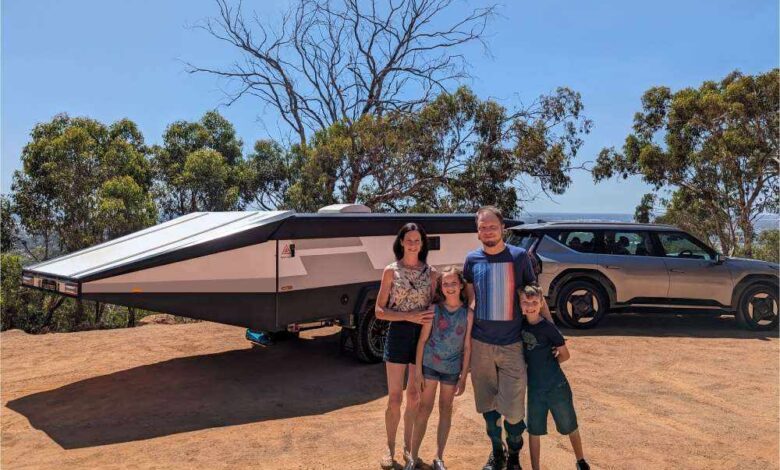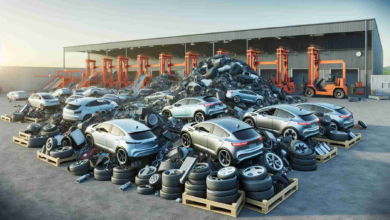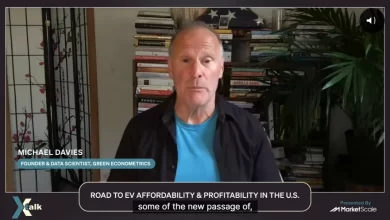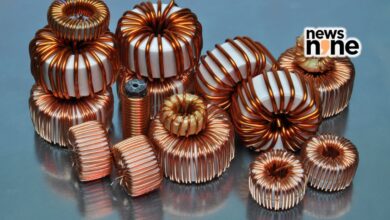Can you tow a caravan with an EV?

Hi Bryce,
Currently we have a Toyota Landcruiser Diesel V8 which we use to safely tow a 2-tonne caravan.
We have the opportunity to purchase a Kia EV9: Do you think it will be possible to tour towing a caravan with the Kia EV9 with the currently available chargers network? We currently also drive an MG4 77LR.
Many thanks
Richard
Hi Richard – that’s a great question!
The EV9 in long range/all-wheel drive form has a tow rating of 2500kg (braked) so that’s a ‘tick’ there. In addition to the EV9 is the BMW iX with a 2500 kg rating, the Genesis GV70 with 2200 kg and the Polestar 4 with 2000 kg. We also can’t forget the first BEV with a big tow rating: the (now second-hand only) Tesla Model X with 2250 kg.
Harking back to the EV9: The long range versions have a WLTP rating of just over 500 km. That is plenty to do interstate runs on its own, but with towing?
In the past, I’ve towed a small trailer that fits into the wind shadow of my EV and found the range to drop range by only about 10% – even at highway speeds. (The key issue with EVs and towing being less to do with weight and more to do with aerodynamic drag). That means towing a heavy wind resisting caravan would be another matter entirely.
In the US, where larger 4WD EV utes and SUVs with good tow ratings are already available – reports for the Rivian R1T and Ford F150 Lightning dual-cab utes are that towing at full load rating (around 4.5t to 5t) reduces range by around 50%. Extrapolating that to the EV9, it would at a guess have a range of 250 km towing a 2t caravan.
For comfort: I would bank on 150-200 km between charges, depending on geography. (For instance, if towing uphill a lot in one section use the 150 km figure).
That might mean the EV9 might not meet the time constraints of a long trip done in a hurry, as it would need perhaps 15 to 40 min charging time every couple of hours: plus you’d need to check if there are chargers available on your chosen route.
That by the way is no longer the issue it once was. Most of the major interstate routes (and even many of the major byways) have DC chargers close enough together to work for that sort of trip.
Tasmania for instance will soon have an average distance of around 80 km between DC charger sites, so you could skip every second charger and still get around most of the state. (The last gaps in the system are in the process of being closed – hopefully by late this year).
On the other hand, a 150 km to 200 km safe range would comfortably work for taking that caravan say from Melbourne to Korrumburra or to the beachside camping areas along the Mornington Peninsula. (Apologies for the Victorian references by the way, but that’s the easiest for me to relate to for examples as I live there!).
Even a ‘grey nomad’ who is in no hurry would probably be fine with that too. (Especially as a lot of ‘refuelling’ would be done via the 15A caravan outlet and be way cheaper/easier than stopping for fuel!)
If you want a longer range than that for towing – you might have to wait something with a 150 kWh or more battery, such as the long-range versions of Rivian’s R1T and R1S or Ford’s F150 Lightning.
There is however one caveat to towing anything with an EV – and that is the standard layout of most charger sites. Commonly, they are arranged as a single car-length spot or pull-in rows.
If you’re towing, that means you have to unhitch to be able to access the charging lead without either covering up all the other chargers with the towed item, or have it stick out into the traffic. That would turn a 10 to 15 minute charging stop into up to an hour by the time you find a spot to park and unhitch your trailer, move to the charger, then return afterwards to re-hitch and away.
Added to that frustration is the approvals process for installing chargers – commonly there are fewer planning restrictions if converting an existing car spot than trying to reconfigure a parking area. As a result, it is little wonder that to date chargers have tended to be provided to existing single spots or pull-in rows than trying to create pull-through layouts.
However, it won’t be too much longer before the arrival of medium to large capacity trucks starts to force change. The expansion of that BEV segment will put pressure on charging providers to install truck friendly recharging bays – much like the largest roadhouses have truck refuelling sections now.
I can see a time when the pull-through truck refuelling section of a roadhouse will evolve to a two tier-charging layout. One of those will be medium speed DC chargers with standard CCS2 fast-chargers, the other a dedicated Mega Charger System (MCS) section.
The CCS pull-through area will be shared by light to medium duty commercial vehicles and caravan/boat etc owners. The MCS charger section will be dedicated to the biggest trucks.
Summing up: Towing with BEVs is now possible, but still back in the ‘innovators’ phase, unlike the passenger BEV market here that even here is moving from ‘early adopter’ to ‘early majority’.
BEVs with good driving ranges and tow ratings are hitting the market and would be capable of meeting many towing applications. However, just like my first trip to Sydney in 2019, the DC charging network has yet to properly cater for this segment but, just like it has for passenger cars, it will catch up.
At present, the best way to travel with a caravan is to use Plugshare to check the site layouts first and pick the best ones for charging BEVs with trailers attached.
Mind-you, in my work as a consultant on EV charging site selection and layout, councils and others are becoming more receptive to considering pull-through charging needs as part of the site selection and design process, so it should not be long before those with trailers (as well as larger trucks) start to see a proliferation of chargers that meet their needs too.
See also: Tesla ruins weekend with first Australia Supercharger site designed for towing caravans, boats
And: Family to set off on 9-month trek towing a caravan in an electric EV9
And: “It was fantastic:” Tesla towing caravan with solar and batteries completes Big Lap of Australia:
Bryce Gaton is an expert on electric vehicles and contributor for The Driven and Renew Economy. He has been working in the EV sector since 2008 and is currently working as EV electrical safety trainer/supervisor for the University of Melbourne. He also provides support for the EV Transition to business, government and the public through his EV Transition consultancy EVchoice.



